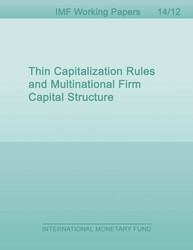
Thin Capitalization Rules and Multinational Firm Capital Structure
This paper examines the impact of thin capitalization rules that limit the tax deductibility of interest on the capital structure of the foreign affiliates of US multinationals. We construct a new data set on thin capitalization rules in 54 countries for the period 1982-2004. Using confidential data on the internal and total leverage of foreign affiliates of US multinationals, we find that thin capitalization rules significantly affect multinational firm capital structure. Specifically, restrictions on an affiliate's debt-to-assets ratio reduce this ratio on average by 1.9%, while restrictions on an affiliate's borrowing from the parent-to-equity ratio reduce this ratio by 6.3%. Also, restrictions on borrowing from the parent reduce the affiliate's debt-to-assets ratio by 0.8%, which shows that rules targeting internal leverage have an indirect effect on the overall indebtedness of affiliate firms. The impact of capitalization rules on affiliate leverage is higher if their application is automatic rather than discretionary. Furthermore, thin capitalization regimes have aggregate firm effects: they reduce the firm's aggregate interest expense but lower firm valuation. Overall, our results show than thin capitalization rules, which thus far have been understudied, have a substantial effect on the capital structure within multinational firms, with implications for the firm's market valuation.
Publication date: January 2014
ISBN: 9781484384442
$18.00
Add to Cart by clicking price of the language and format you'd like to purchase
Available Languages and Formats
| English |
Prices in red indicate formats that are not yet available but are forthcoming.
Topics covered in this book
This title contains information about the following subjects.
Click on a subject if you would like to see other titles with the same subjects.
Economics- Macroeconomics , Economics / General , International - Economics , Thin capitalization rule , Multinational firm , Capital structure , Taxation , , tax burdens , interest payments , tax countries , tax authorities , corporate income tax , tax competition , corporate tax rate , income tax rates , foreign tax , high-tax countries , country taxation , ta
Summary
Copyright © 2010 - 2024
Powered by:
AIDC



